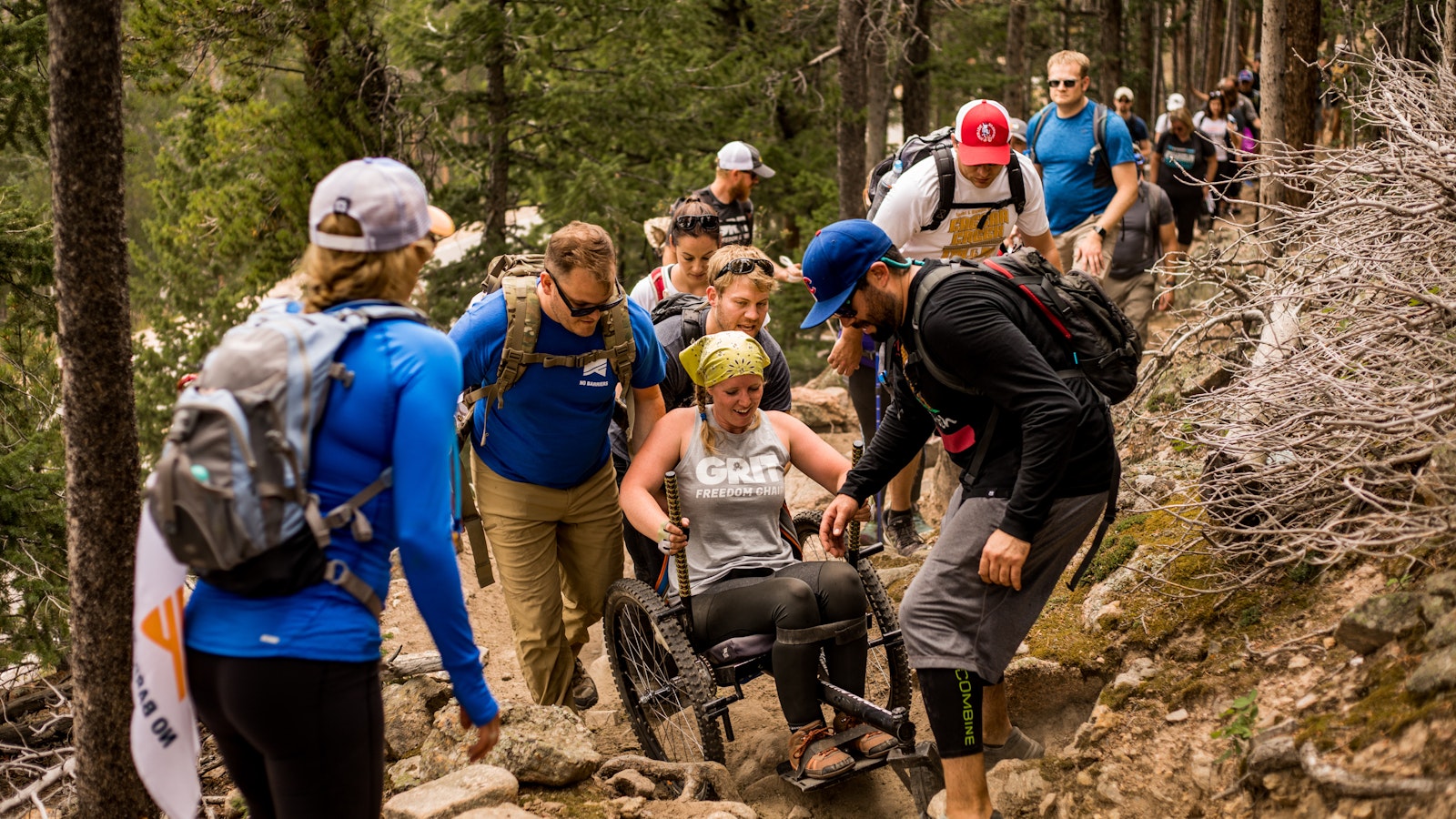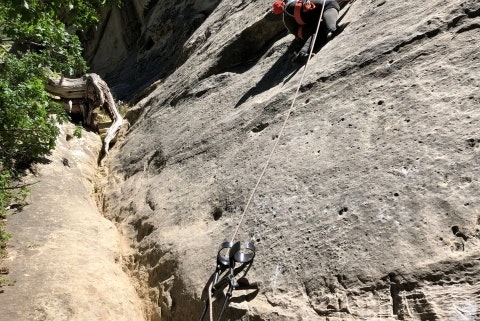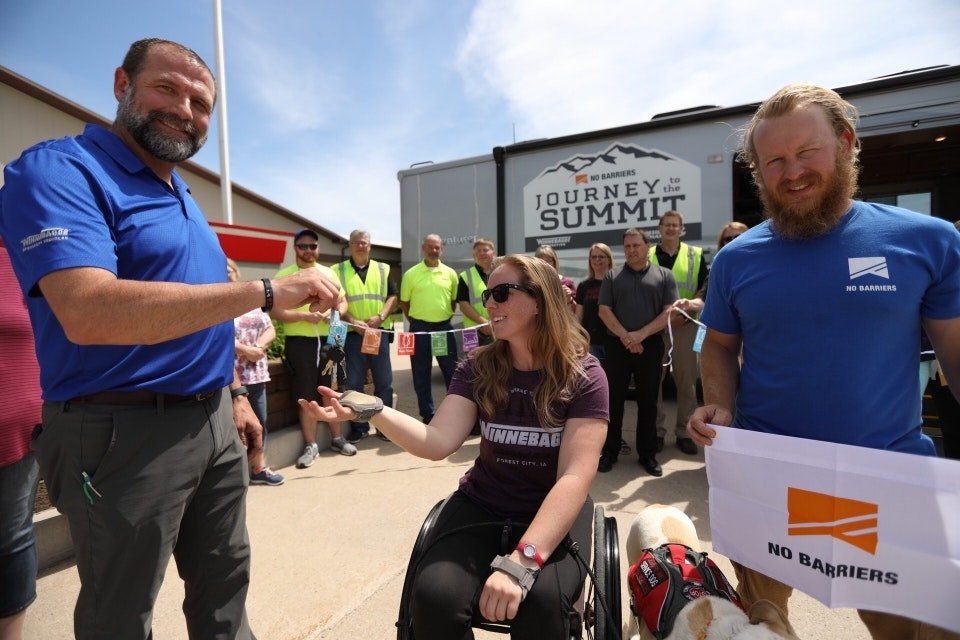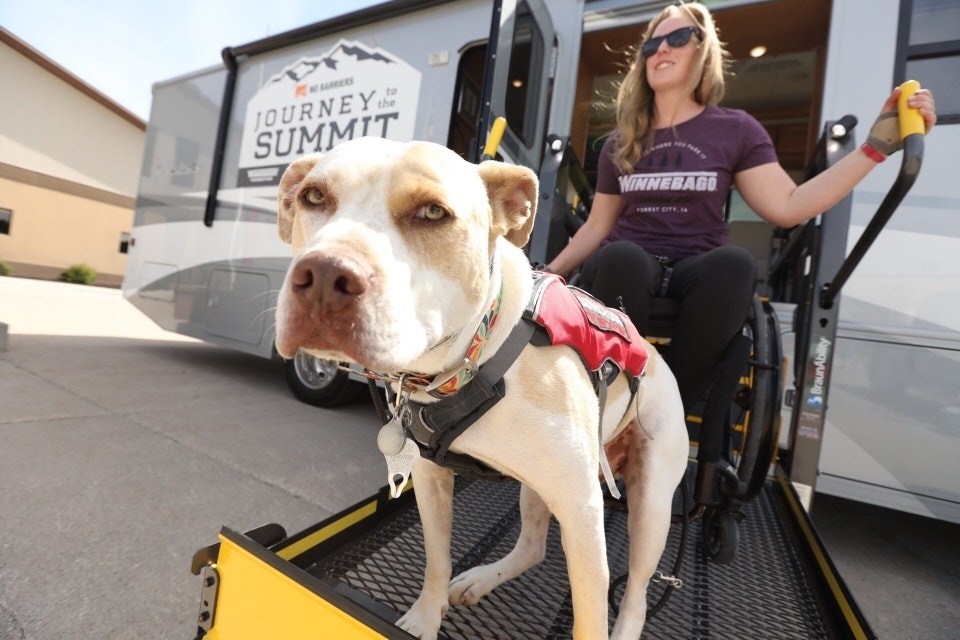Adaptive Adventuring Through National Parks

.
.
For Nerissa Cannon, America’s national parks have always been her door to adventure.
“A lot of times when someone has a disability, there's a lot of emphasis put on the limitation, the barrier. Instead of focusing on someone else solving that problem, someone else putting in that ramp, someone else opening that door, I look for ways to open it myself,” says Cannon.
Cannon grew up in a “big rock climbing community” and preferred to climb without gear to better feel the connection between herself and the wall. “After my mobility declined … rock climbing wasn’t even on my radar,” says Cannon. A friend with similar abilities encouraged her to get back on the wall. Cannon started her adaptive adventuring journey by figuring out how to hike in a wheelchair and with crutches, and those new techniques led her to rekindling her love of climbing.

Today, Cannon is a No Barriers and Winnebago explorer living in Southern Utah and frequents nearby national parks to climb. She has learned what works best for her: she uses a wheelchair with mountain bike components and levers that allow for more torque over uneven terrain and forearm crutches with interchangeable feet for different surfaces.
Her lived experience calls her to share information about accessing national parks as an adaptive adventurer so that others know it’s possible.
Before visiting a national park, Cannon uses the internet to research trail conditions, such as incline, elevation gains, and distance. Seeing photos of the trails is especially helpful when planning ahead.
For specifics, she heads to the park’s visitor center to get the most up-to-date information from National Park Service employees. Cannon shares that it’s really important to give people the information they’re asking for, regardless of your assumption of their capabilities. Cannon explains that she knows her capabilities with and without a team, so when she asks about things like how many steps there are on a trail, the width of a trail, the grade of a trail, it’s most helpful when people aren’t afraid to share that information.
“I'm fully capable. I've climbed 14,000 foot mountains,” adds Cannon.

Jeremy Buzzell, branch chief for the NPS accessibility management program, oversees accessibility-related technical assistance, training, and policy guidance for parks. “Our job is to provide information so each visitor can make their own well-informed decision,” Buzzell explains. In other words, an informed decision is an empowered decision.
Buzzell says that visitors can start by researching park accessibility broadly on Recreation.gov, like searching for “accessible campsites” in the search bar. If you know which park you’d like to visit, check out the Plan Your Visit tab of the park-specific nps.gov page.
Once you enter the park, Buzzell suggests stopping by the visitor center for a conversation with park employees about what activities you’re interested in and what your abilities are. Accessibility is a spectrum and together, park visitors and park employees can brainstorm different options for trails, exhibits, and more that you may enjoy.
Just as Cannon uses adaptive equipment to hike, there are many ways people with disabilities experience national parks. There is no one accessibility solution, but rather a range of options. From adaptive paddling gear to accessibility enhanced motorhomes, like those from #FindYourPark / #EncuentraTuParque partner Winnebago Industries, a variety of tools exist to help adaptive adventurers navigate national parks.

Ultimately, many people go to national parks to ignite their sense of adventure. “I would encourage more people to take on a little bit more adventure, because it's okay to turn around. It's okay to start a trail and then go, ‘Oh, this is a little more than I thought,’” says Cannon.
People of all abilities deserve the chance to experience our nation’s greatest treasures and to make the decisions for themselves about how to experience them. “I have the right, everyone with different abilities has the right to decide what they're up for, and we have an equal right as everyone else. Equal right means equal right to that experience, even if it’s a struggle,” says Cannon.